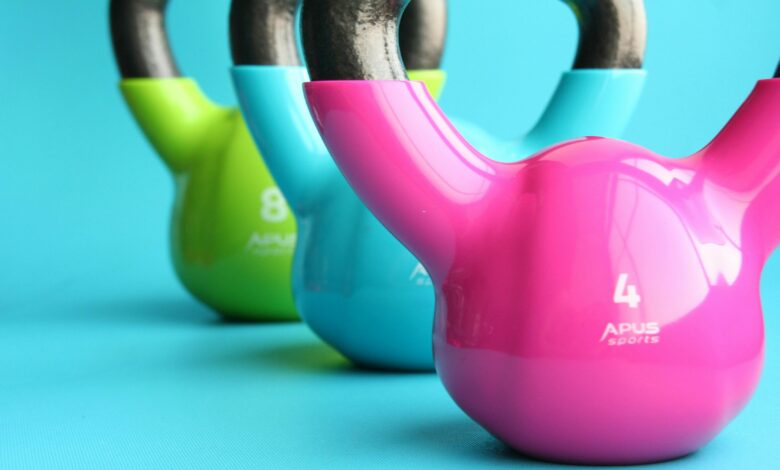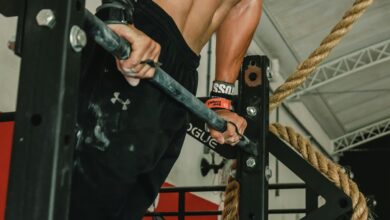The Future of Fitness Equipment: Trends to Watch

The fitness industry has undergone a remarkable transformation over the past decade, driven by technological advancements, shifting consumer preferences, and a growing emphasis on health and wellness. As we look to the future, fitness equipment is evolving beyond traditional treadmills and dumbbells into smart, connected, and personalized solutions that cater to the needs of modern consumers. In this article, we explore the key trends shaping the future of fitness equipment and how they will redefine the way people exercise.
1. Smart Fitness Equipment: The Rise of Connected Workouts
Smart fitness equipment is at the forefront of innovation in the fitness industry. These devices integrate advanced sensors, AI, and connectivity features to provide users with real-time feedback, personalized workouts, and seamless integration with other digital platforms.
Key Features of Smart Fitness Equipment
- Real-Time Performance Tracking : Devices like Peloton bikes and Mirror home gyms monitor metrics such as heart rate, calories burned, and workout intensity, offering instant feedback to optimize performance.
- AI-Powered Coaching : AI algorithms analyze user data to create customized workout plans, suggest modifications, and track progress over time.
- Integration with Apps and Wearables : Smart equipment syncs with fitness apps (e.g., Apple Health, Fitbit) and wearable devices to provide a holistic view of health and fitness.
- Gamification : Many smart devices incorporate gamified elements, such as leaderboards, challenges, and rewards, to keep users motivated and engaged.
Impact on the Industry
Smart fitness equipment is democratizing access to high-quality training, making it possible for users to enjoy studio-like experiences from the comfort of their homes.
2. Home Gyms: The New Norm
The COVID-19 pandemic accelerated the shift toward home-based fitness, and this trend shows no signs of slowing down. Consumers are investing in compact, versatile, and aesthetically pleasing equipment to create personalized home gyms.
Popular Home Gym Innovations
- All-in-One Machines : Equipment like Tonal and Bowflex Revolution combines strength training, cardio, and flexibility exercises in a single device, saving space and maximizing functionality.
- Compact Designs : Foldable treadmills, portable resistance bands, and modular weights cater to urban dwellers with limited space.
- Virtual Classes : Platforms like Beachbody On Demand and Nike Training Club offer guided workouts that complement home gym setups.
Why Home Gyms Are Here to Stay
- Convenience: No need to commute to a gym or adhere to fixed schedules.
- Cost-Effectiveness: Long-term savings compared to gym memberships.
- Privacy: Users can exercise without feeling self-conscious.
3. Sustainability: Eco-Friendly Fitness Solutions
As environmental concerns grow, the fitness industry is embracing sustainable practices in equipment design and manufacturing.
Examples of Sustainable Fitness Equipment
- Recycled Materials : Companies are using recycled plastics, metals, and rubber to produce eco-friendly treadmills, yoga mats, and weights.
- Energy-Generating Machines : Some cardio equipment, such as EnergyFit bikes, converts kinetic energy from workouts into electricity to power homes or gyms.
- Minimalist Design : Simplified designs reduce material usage and extend product lifespans.
Consumer Demand for Green Products
Eco-conscious consumers are prioritizing brands that align with their values, driving demand for sustainable fitness solutions.
4. Immersive Experiences: Virtual and Augmented Reality
Immersive technologies are transforming workouts into engaging, interactive experiences that go beyond traditional exercise routines.
Applications of VR and AR in Fitness
- Virtual Environments : VR headsets transport users to scenic locations, such as mountain trails or tropical beaches, enhancing motivation and enjoyment.
- AR-Guided Workouts : Augmented reality overlays instructions and animations onto real-world environments, helping users perform exercises correctly.
- Interactive Games : Gamified fitness apps combine movement with storytelling, turning workouts into adventures.
Benefits of Immersive Fitness
- Increased engagement and adherence to exercise routines.
- Reduced boredom and monotony during repetitive activities.
5. Personalization: Tailoring Equipment to Individual Needs
Personalization is becoming a cornerstone of the fitness industry, with equipment designed to adapt to individual goals, abilities, and preferences.
How Personalization is Evolving
- Adjustable Resistance Levels : Machines like Hydrow rowers and NordicTrack treadmills allow users to customize resistance settings for different fitness levels.
- Biometric Sensors : Embedded sensors measure body composition, posture, and movement patterns to provide tailored recommendations.
- Adaptive Programming : Software adjusts workout intensity and duration based on user performance and recovery data.
Why Personalization Matters
Customized experiences enhance results, satisfaction, and long-term commitment to fitness.
6. Recovery-Focused Equipment: Beyond Exercise
Recovery is gaining recognition as an integral part of fitness, leading to innovations in recovery-focused equipment.
Emerging Recovery Tools
- Massage Guns : Devices like Theragun and Hyperice deliver percussive therapy to relieve muscle soreness and improve circulation.
- Cryotherapy Chambers : Whole-body cryotherapy units reduce inflammation and accelerate recovery after intense workouts.
- Foam Rollers with Vibration : High-tech foam rollers combine vibration and heat therapy for deeper muscle relaxation.
The Role of Recovery in Fitness
By prioritizing recovery, users can prevent injuries, reduce fatigue, and achieve better overall performance.
7. Subscription Models: Access Over Ownership
The subscription economy is making its way into the fitness equipment market, offering users flexible access to premium products and services.
Examples of Subscription-Based Fitness
- Equipment Rentals : Companies like Fhitting Room and GymPod allow users to rent high-end equipment for short periods.
- Membership Services : Brands like Tempo and Echelon offer monthly subscriptions that include equipment, classes, and coaching.
- On-Demand Content : Streaming platforms provide unlimited access to workout videos and tutorials for a recurring fee.
Advantages of Subscriptions
- Lower upfront costs compared to purchasing equipment outright.
- Regular updates and new content to keep users engaged.
8. Inclusivity and Accessibility: Fitness for Everyone
The future of fitness equipment is inclusive, catering to diverse populations regardless of age, ability, or background.
Innovations in Inclusive Design
- Adaptive Equipment : Specialized machines accommodate individuals with disabilities, enabling them to participate in physical activity safely.
- Budget-Friendly Options : Affordable equipment ensures accessibility for low-income households.
- Culturally Relevant Content : Workout programs reflect diverse cultural backgrounds and preferences.
Why Inclusivity Matters
By breaking down barriers to entry, the fitness industry can promote equity and empower more people to lead healthier lives.
9. Hybrid Fitness: Combining Physical and Digital Worlds
Hybrid fitness blends in-person and virtual experiences, offering users the best of both worlds.
What Hybrid Fitness Looks Like
- Live Streaming Classes : Gyms broadcast live sessions that members can join remotely or attend in person.
- Smart Mirrors in Studios : Devices like Mirror enable instructors to provide real-time feedback to both in-studio and online participants.
- Community Building : Social features foster connections among users, whether they’re exercising at home or in a gym.
Benefits of Hybrid Fitness
- Flexibility to choose between home and studio workouts.
- Enhanced community engagement and accountability.
10. Data-Driven Insights: Leveraging Big Data
Big data is revolutionizing the fitness industry by providing actionable insights into user behavior, preferences, and outcomes.
How Data is Used in Fitness
- Predictive Analytics : Algorithms predict optimal workout schedules and recovery times based on historical data.
- Health Monitoring : Integration with medical records helps identify potential health risks and tailor interventions accordingly.
- Market Research : Manufacturers use consumer data to develop products that meet emerging demands.
Challenges and Opportunities
While data-driven insights enhance personalization, privacy concerns must be addressed to maintain user trust.



